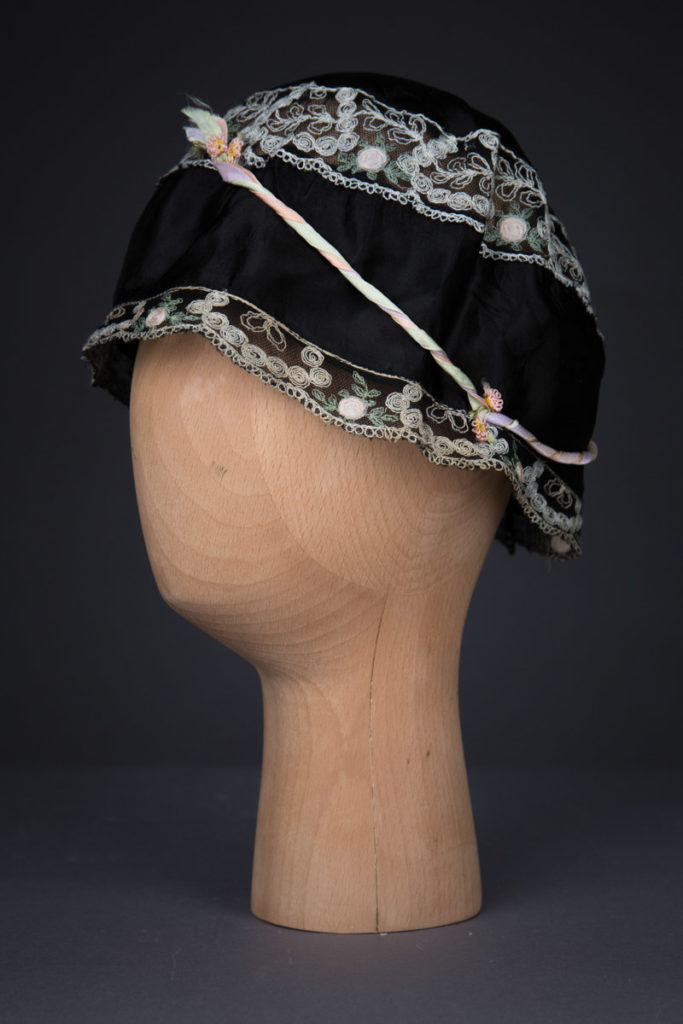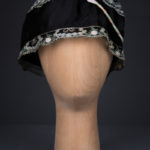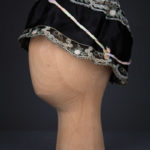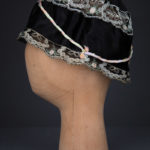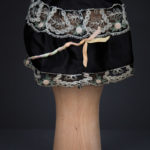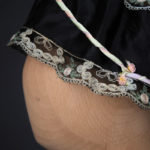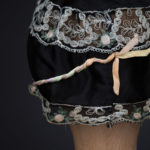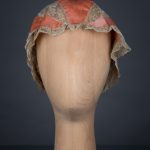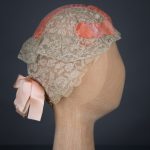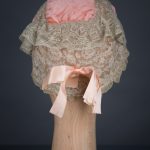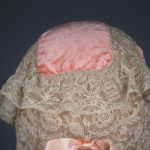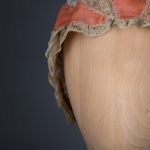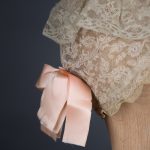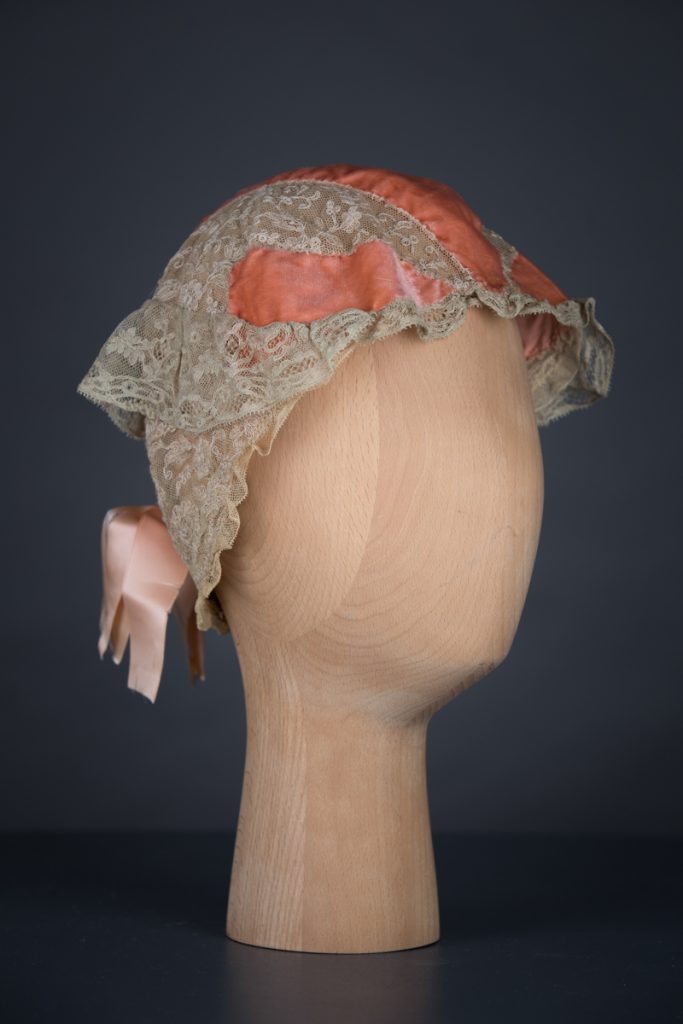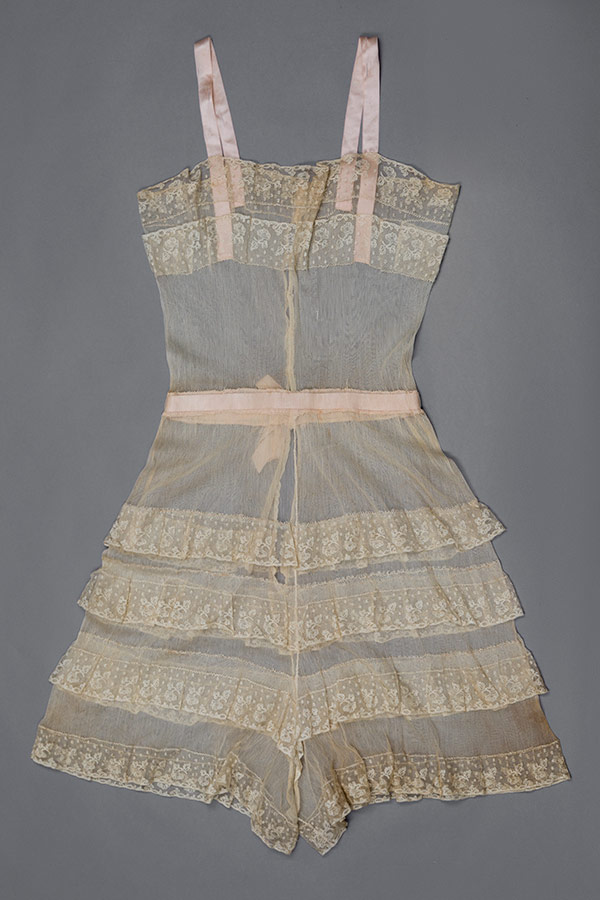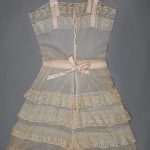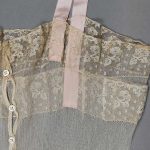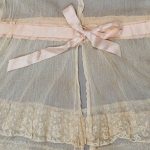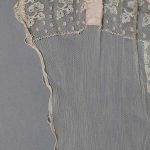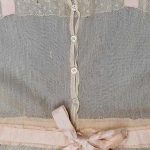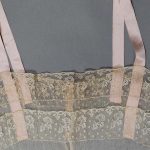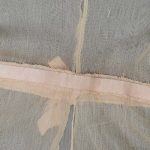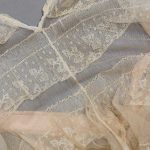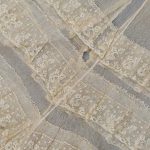Boudoir caps provided a safe and contained version of sex appeal which attracted many women. They owe their great popularity to the fact that they were decent and respectable in their seductiveness, a symbol of the delicate balancing act ‘modern’ women had to navigate. With the turn of the century, pressure on young women and housewives to be able to sexually please their husbands increased. While focus had earlier been placed on the abilities to run a household, to nurture their families and raise their children, with increasing sexual freedom the expectations for women to provide for their husbands’ sexual needs increased too. In ‘The Cult of Chiffon’ from 1902 for example Mrs. Pritchard reminded her female readers firmly that it is their duty to seduce and sexually please their husbands, else he would find this elsewhere. Considering the woollen utility garments her contemporaries were wearing, she asked: “Can one wonder that marriage is so often a failure, and that the English husband of such a class of woman goes where he can admire the petticoat of aspirations?” (Pritchard, 11).
Chapter Five: A Safe Version Of Sex Appeal
Black Silk Boudoir Cap With Machine Embroidered Trim & Ribbonwork
Date: c. 1930s
Origin: Great Britain
Fabric: Silk
Brand: Unknown
A boudoir cap with a black silk base and multicoloured embroidered cotton tulle trims. It is embellished with a single piece of twisted ombré silk ribbon, with small embroidered floral motifs at the anchor points.
Coral Pink Silk Velvet, Embroidered Tulle & Leavers Lace Boudoir Cap
Date: c. 1910s
Origin: Great Britain
Fabric: Silk velvet, embroidered tulle, leavers lace
Brand: Custom made
A boudoir cap in coral silk velvet and Schiffli embroidered cotton tulle, trimmed with a fine leavers lace and embellished with a silk satin bow at the rear of the garment.
Silk Tulle And Lace Ruffle Step-In
Date: c. late 1910s or early 1920s
Origin: Unknown, possibly Great Britain
Fabric: Silk
This early example of the step-in style is remarkable both in its decidedly luxurious fabrication and in how scandalous such a sheer piece would have been deemed. It is certainly likely that such a garment would have been designed for the boudoir rather than everyday wear. It is a relatively simply cut piece, echoing the movement from complex Edwardian trousseaus to the simple, rectangular focused shapes of the 1920s. The bodice has a single back seam, joined to vertically seamed legs through a ribbon channel waistband. The back fastens with a series of shell buttons and hand made loops and a silk bow at the waist.
Navigation
Chapter One: Introduction & The Boudoir Cap’s Predecessors
Chapter Two: A Rite Of Passage Into Adulthood
Chapter Three: Glamour For All
Chapter Four: An Affordable And Attainable Way Of Achieving The Boudoir
Chapter Five: A Safe Version Of Sex Appeal
Chapter Seven: Dress For Undressing
